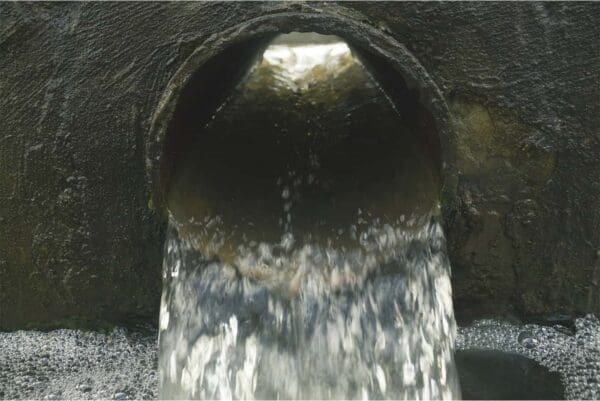
Updated on July 13, 2021
Asbestos is largely viewed as a concern when airborne fibers are inhaled. Studies have shown most mesothelioma cases and other asbestos-related diseases are caused by inhalation of the fibers. However, ingestion is another prominent concern, especially in cases of peritoneal mesothelioma.
Recently, residents in Texas and California have become more concerned with ingestion of asbestos after experiencing asbestos-contaminated drinking water. Early this year (2017), residents in two small Texas towns faced the possibility of drinking water containing more asbestos fibers than allowed by the Environmental Protection Agency (EPA).
Asbestos in Old Pipes Leaching Into Water
Asbestos in old pipes is a long-standing concern. During the height of its use, asbestos was widely used in cement pipes to create a stronger, longer-lasting product. These asbestos pipes were first laid as early as the 1930s and were believed to be highly durable and resistant to corrosion. They were said to have a lifespan of about 70 years.
By the 1950s, however, regulations were in place for the use of asbestos piping for municipal water. But, these new standards didn’t require old pipes to be removed or updated. Many of these old pipes are still in the ground today and have reached or are reaching the end of their lifecycle, leading to more problems for residents. Even as early as the 1980s, some residents saw the harmful risks of asbestos in the water supply.
Asbestos in the Water of a New York Town
In 1985, the town of Woodstock, New York experienced asbestos-related problems with their water service. Although the town’s asbestos pipes had been installed in the 1950s, the corrosiveness of the local water helped to break down the supposedly long-lasting, durable pipes in just a few decades.
The contamination was so extensive, asbestos fibers clogged showerheads and faucets. Tests of their water supply suggested asbestos began leaching into the water around 1976. Residents were cautioned to stop using the water, and new pipes were installed the following year.
Texas Towns Experience Asbestos in Water
Residents in two Texas towns began to face asbestos similar problems early this year (2017) and late last year (2016). In 2016, citizens in Devine, Texas received a warning letter after the town saw higher-than-allowed asbestos levels in its water for one year. Testing done periodically from January through July revealed fluctuating asbestos levels of 14, 17 and 18 MFLs. These levels were more than double the limits set by the EPA.
The mayor of Devine said town officials did not believe it was a serious danger. They were not told to cut off the water supply like in other cases and hoped it was a mere testing issue.
Although the city maintained the water was still safe to drink, many residents were concerned and started buying bottled water instead while the town worked on securing grants to replace the pipes.
Schools in Arp, Texas, faced similar issues with the city’s old asbestos pipes this past August. The town’s mayor and superintendent for the district said the water was visibly discolored and clearly contaminated. Once testing revealed asbestos at levels of 10, 12 and 13 MFLs in the different areas, the town quickly took action. The schools were given water coolers and bottles of water for cooking and drinking. Construction was underway in October to replace the asbestos pipes.
Natural Disasters Can Lead to Contaminated Water
Natural disasters also pose a large asbestos risk. Because many old buildings, including schools and homes, were built with asbestos or lead, all the pollutants may be released into the air and surrounding grounds when damaged by natural disasters. This can take the form of toxic ash or other forms of debris.
Sonoma and Marin counties in California were also faced with the possibility of asbestos and other toxins entering their water supply after devastating wildfires in October (2017). Damage from the wildfires exposed these pollutants in the burn zones. As rain was expected in the forecast, officials worried the dangerous materials would be washed into local rivers and streams – and eventually the public water supply.
Sonoma alone has 617 streams that wind through the burn zones and feed into the area’s main source of drinking water, the Russian River. At last report, the county’s officials said the water supply remained safe for the several hundred thousand residents that rely on it but would be monitored for any of these toxins throughout the season.
In the meantime, the EPA had teams on the ground helping with cleanup and analyzing each burn area carefully for pollutants. County officials have also been putting out sandbags to help catch any run-off rainwater before it enters any of the water sources and potentially causes contamination.
Damage to Superfund Sites
Officials have also been worried about hazardous chemicals from the Superfund sites throughout the nation.
Natural disasters can disturb and spread toxins from Superfund sites to nearby areas. This is particularly the case for sites that have not yet been cleaned up and deemed safe by the EPA. Superfund sites currently exist across the United States.
How to Stay Safe
The easiest way to help keep your water safe from any contaminants, such as asbestos, is to use some type of water filtration. This can be as simple as models installed directly on your faucets or water pitchers that filter out impurities. Some may also invest in more expensive options, like a system for the whole house or under-the-sink models.
Turning to bottled water may be another option when facing these health risks. Bottled water is regulated by the Food and Drug Administration (FDA) to ensure water is bottled safely without contamination. Companies selling these products must maintain quality testing. The testing must include testing samples before and after bottling.
Concerned consumers can check the water bottles and other packaging for information on testing. They can also get in touch with manufacturers to learn more about how often their water is tested and the methods used.
Overall, the best way to stay safe from asbestos and other toxins in our drinking water, buildings we frequent and products is to stay educated on where they can be commonly found and any environmental issues in your local communities.
Knowledge is crucial for prevention and until action is taken to ban and remove old uses of asbestos, such as our water pipes, exposure risks will continue.




